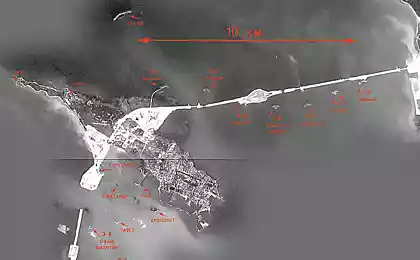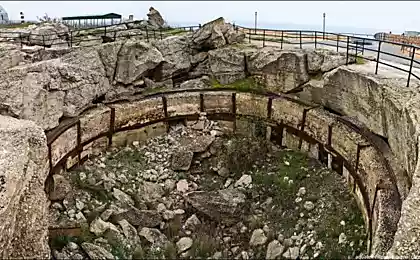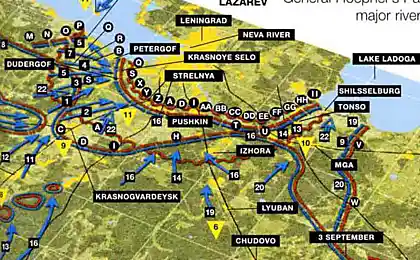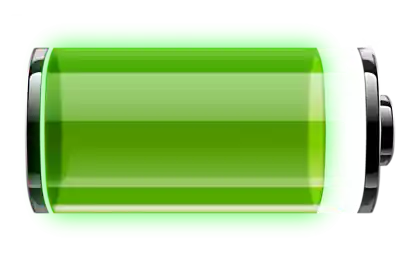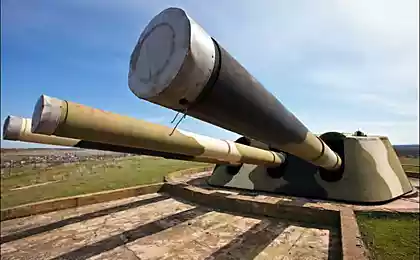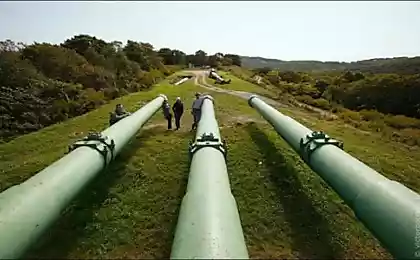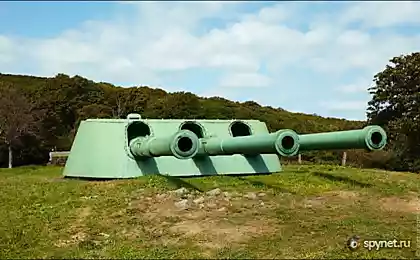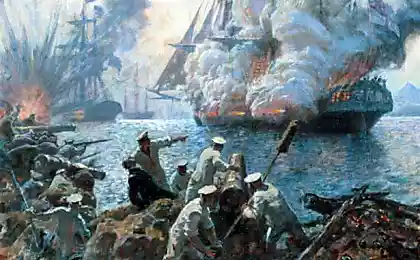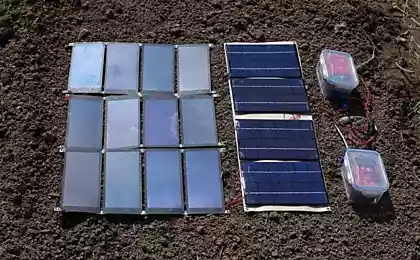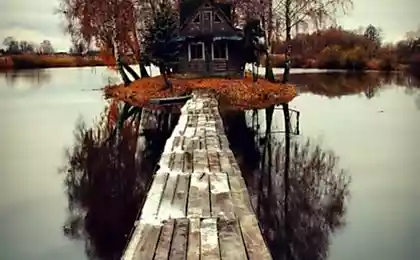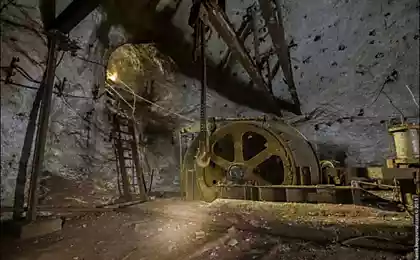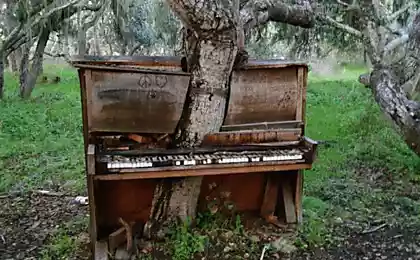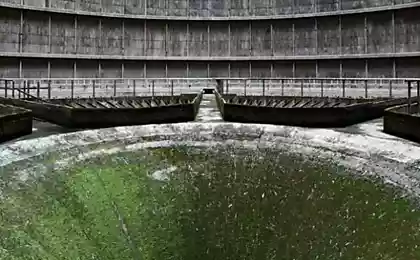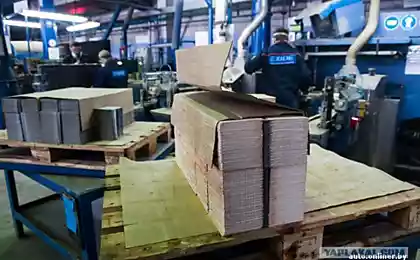798
Chronicle Heroes: Abandoned 19th cannon battery
Almost a hundred years ago, the decision of the Military Council at Cape Kuron, on the western shore of the bay of Balaklava Sevastopol built to protect chetyrehorudiynuyu battery. This is the southernmost outpost of the defensive line of the city was able to get the cruisers and battleships at a distance of 20 kilometers.
However, their primary task of fighting with the enemy at sea battery actually fails. In the autumn of 1941 all four guns were turned toward the coast and 6 months almost continuously worked on coming to Sevastopol Wehrmacht.
This battery Germans have not been able to take, how many did not. His resistance to the defenders of the battery completely stopped June 30, 1942, retreating along with the rest of the defending Sevastopol by the Red Army.
Destroyed the battery only in 2002. They cut out and removed all the metal, leaving a gaping openings are not concrete Wehrmacht troops. It made our conscious citizens.
The report blogger aquatek-filips tell stories about the heroic battery during World War II and show what's left of it today.
26 photos

2. Construction of the batteries began in 1913-1914, by order of the Military Council of April 14, 1912 southwest of Balaklava Bay. The head of the works was Colonel Petrov. By the time the Soviet government was ready to pack up to 75%. In Soviet times, it has been completed and armed with 152 mm guns removed from decommissioned ships. Initially numbering battery was different - it was called the battery №10.
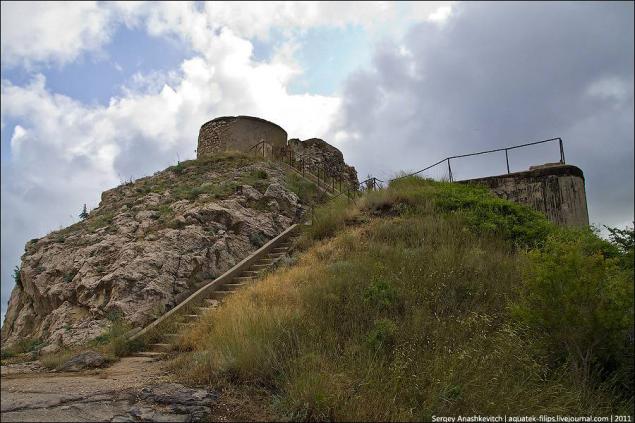
3. View of the battery from the cliff Mytilino. You can clearly see how successful was the choice of its location - arc of fire was impressive angle, it is almost on the cliff with only one hand spacious approach that could be called a minus. It is the location of the battery is largely determined its inaccessibility during the defense of Sevastopol in 1941-1942.
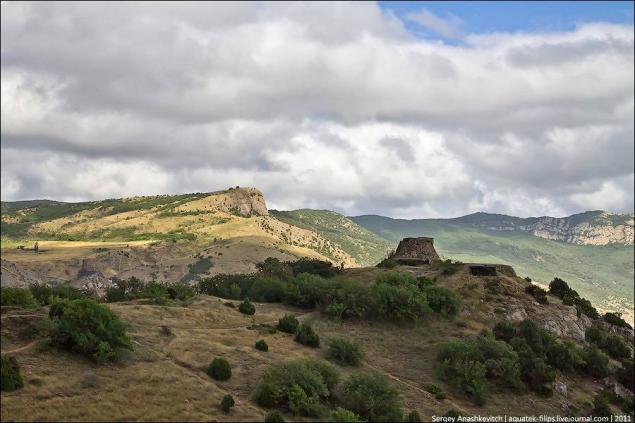
4.Batareya, located on the hill on the right from the exit of the Balaklava Bay, was installed on a concrete base and had a cellar for ammunition and parapet, covering the personnel and weapons from enemy fire from the sea.

5. Brustvernaya part is casemated premises, hosted personnel, auxiliary facilities, etc. Now here love to frolic teens and homeless people sleeping
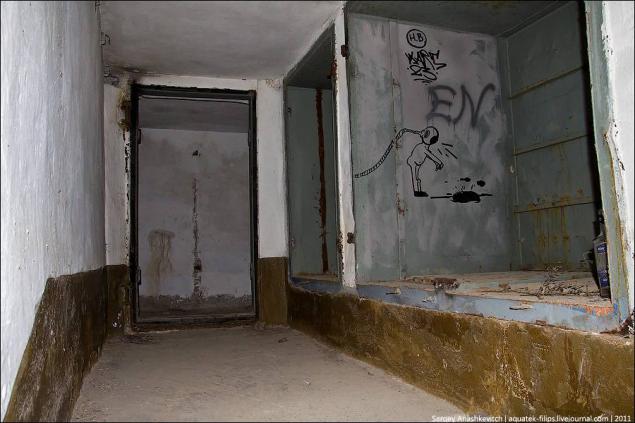
6. Above, I said that the battery was chetyrehorudiynoy. It refers to its pre-war history - before and during the war, there really were four 152-mm artillery shells, which is located hardly
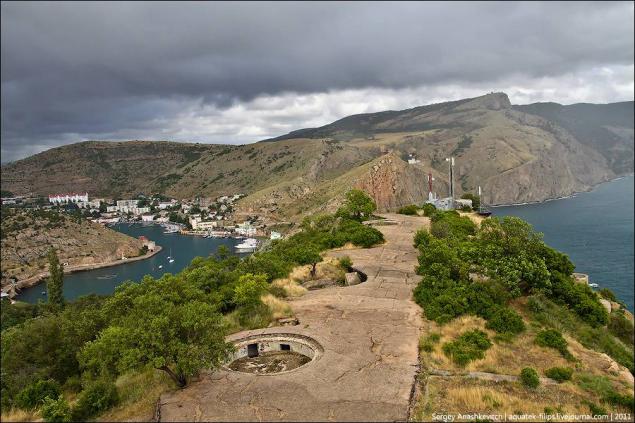
7. Before the war the battery was renamed the 19th, and it was the first commander of G.Aleksander, then commander of the legendary 30th battery. The commander of the 19th during the war was the captain MS Drapushko, military commissar - Senior Political NA Kazakov. It Drapushko name is often called the battery in addition to its number.
Originally the battery was firing 130 degrees, having a rate of up to 10 rounds per minute. Planning Standard battery, except that it is located above the right-flank dungeon the slope and podbrustvernaya gallery has a bend and an extra ladder.

8. The right of the rocks we see two gun positions - they are post-war construction. Although this statement is ambiguous. According to some information and memories, two naval guns in 1942 were installed behind a rock on a temporary basis. This is indirectly confirmed by the fact that in the dungeons of Fort "South", captured by German troops in November 1941, can be seen hitting 6-inch shells and if draw the headmistress shooting guns battery, the fort "South" in the sector (130 degrees) misses. In addition, the German pictures in 1942 are clearly visible traces of the exploded building. However, to establish what were the guns failed.
The base of one of the gun emplacements later
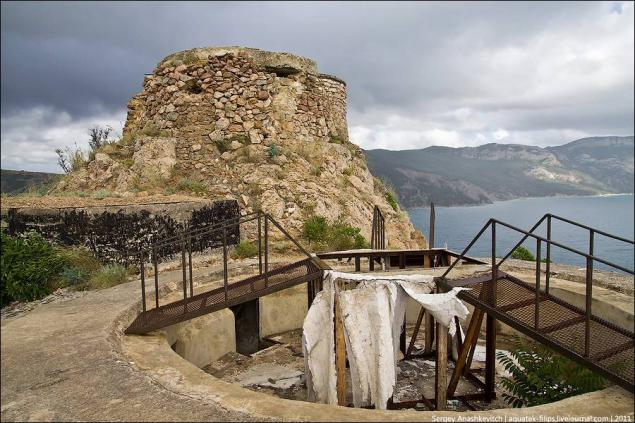
9. Modern gun positions have casemated service premises at its base. They were intended to serve the guns, as well as its charging / discharging during the battle

10. Podorudiynye casemates "basic positions»
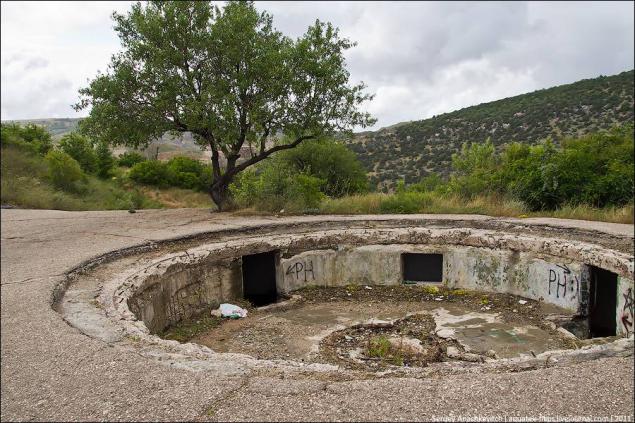
11. The battery was equipped with several observation points and rangefinder. One of them is a little lower down the slope, and to it is not very easy, especially in wet weather

12. Guardrails and proved a thorn metalheads unnecessary
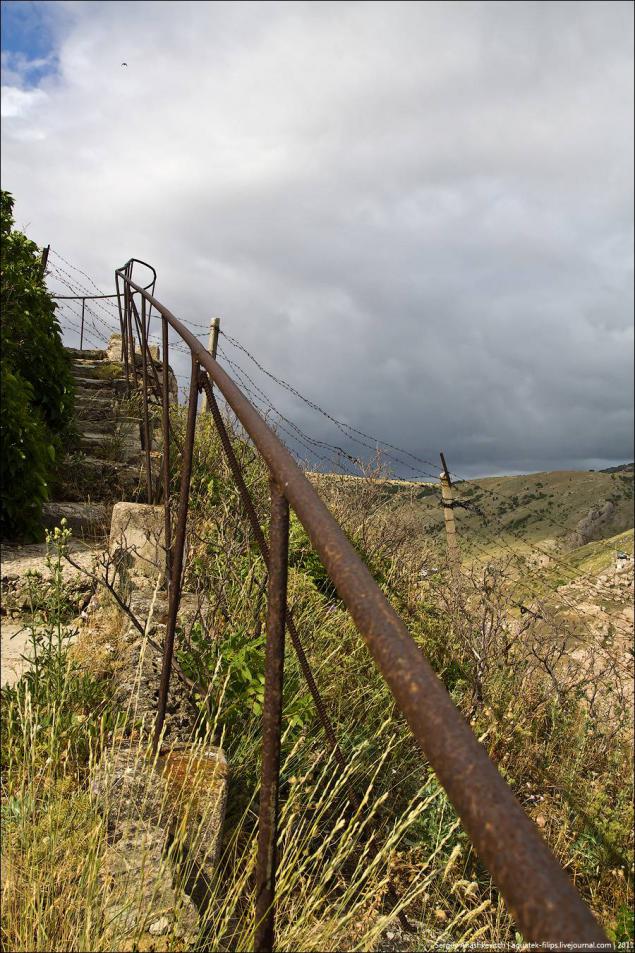
13. The main entrance to the dungeons of the battery. Premises much inside incredibly damp, cold and a lot of mold. It cuts all that is possible. But because of the special humidity, the homeless do not live here, and hence there is a modern dirt

14. Decaying hinges
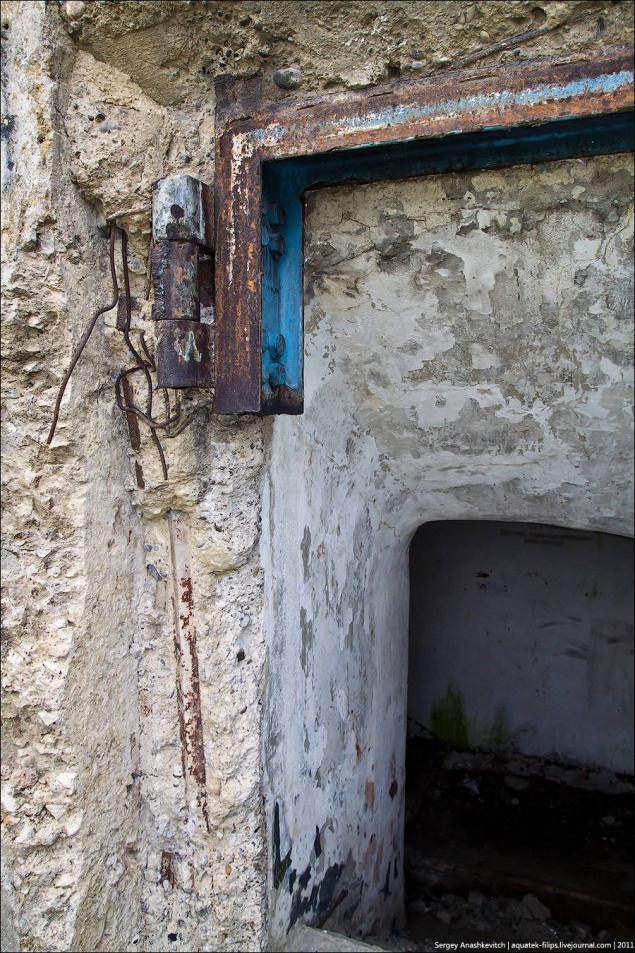
15. Entrance to one of the casemate rooms. There still is a little light, allowing you to take pictures
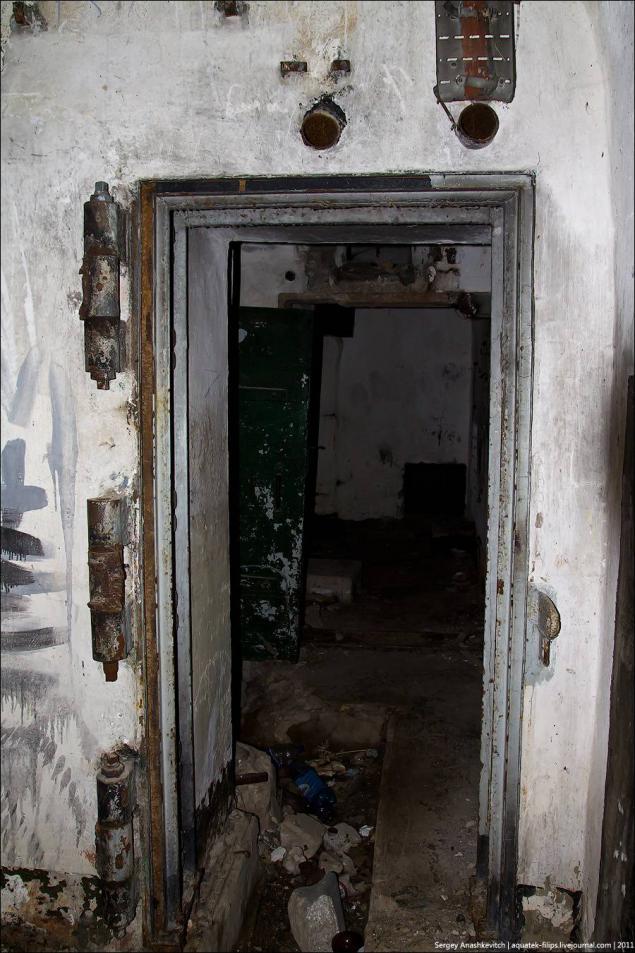
16. With every meter of every cooler. Outside the door to the right begins full darkness.
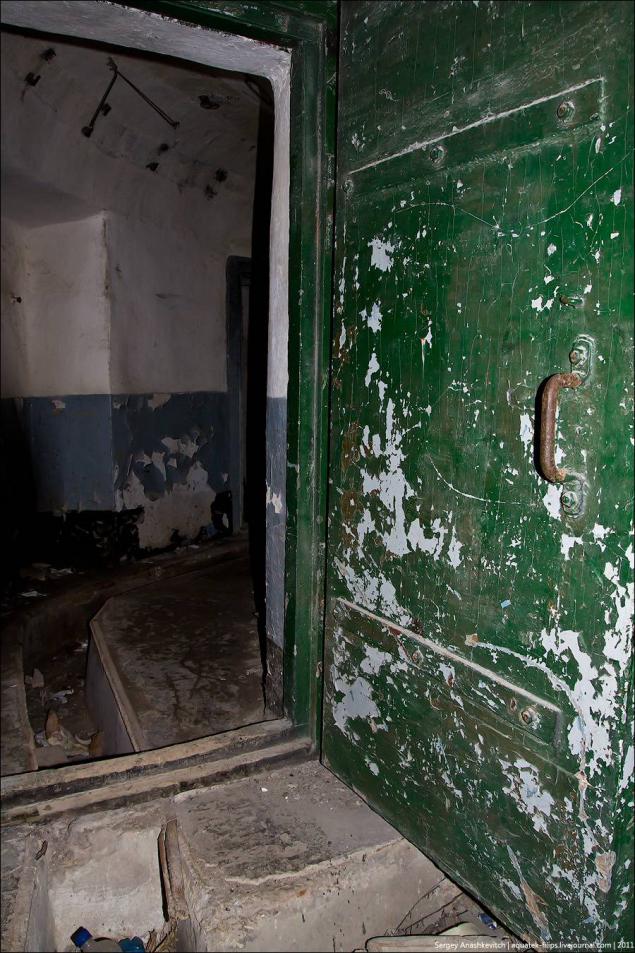
17. Photos can be done with the Eleventh times. The camera refuses to focus at close range, so on only manual focus.
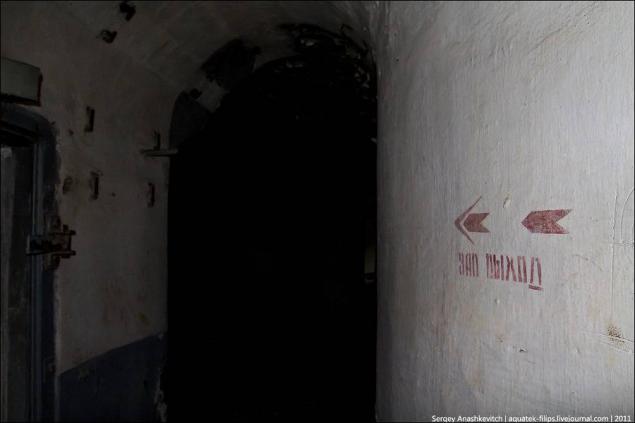
18. Everything here is already pitch dark. Lantern did not think to take, so is flashed his 50-ki, in the intervals of light is focused manually and randomly shoot with the flash. Something happened
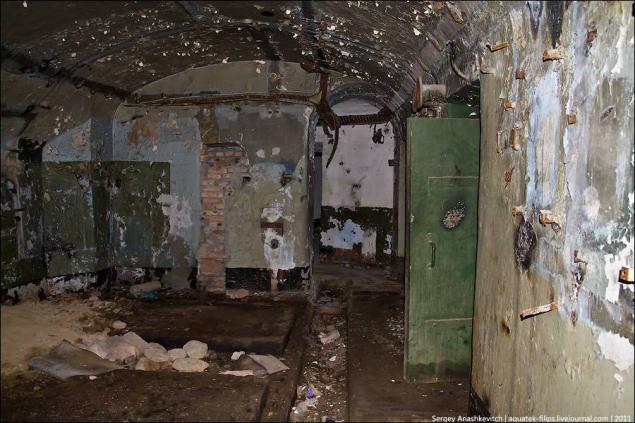
19. diesel generator. Just was not killed on the pipe sticking out of the ceiling
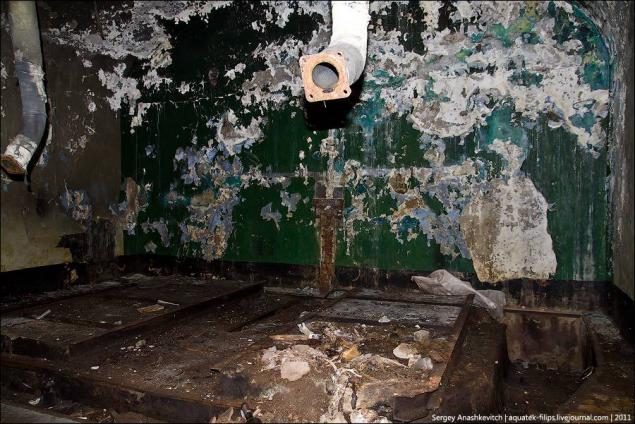
20. The ladder to the top. There's light

21. Finally got. There, behind these walls I walked 10 minutes ago
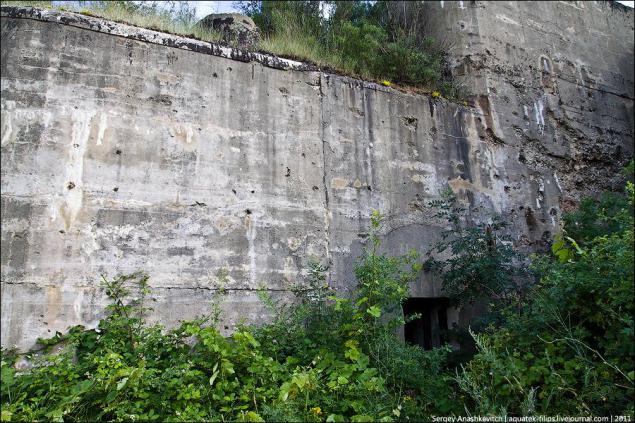
22. There, in dungeons, in one place far above the point of light flashed. Apparently this gap and has its source
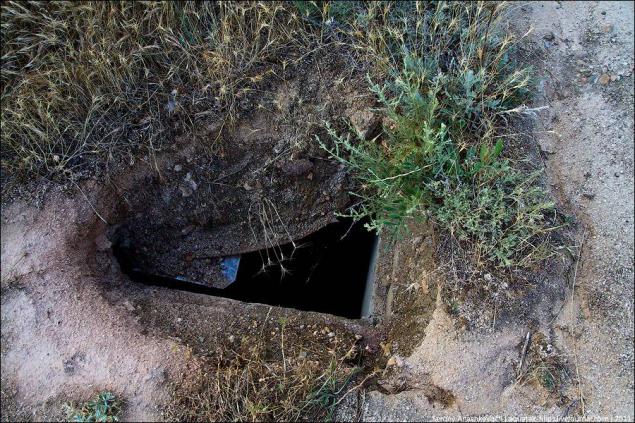
23. Radioparent cap gun radar interference. It came with guns B-13 in the reduction of the battery after the war.
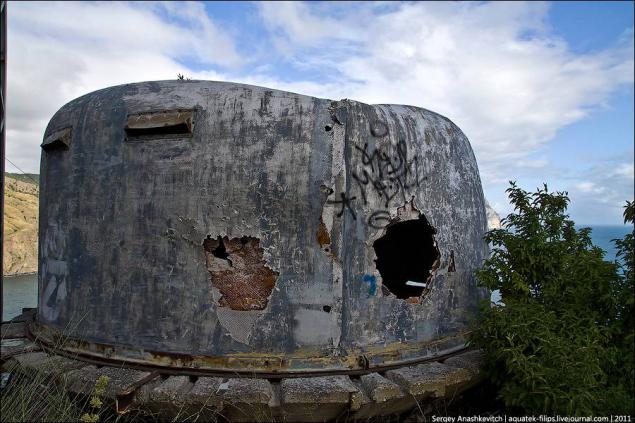
24. Its walls are made of a material similar to fiberglass. Apparently she came here at the end of battery life. By the way, after the war, the battery has been restored and were serving for the protection of the naval base of the Black Sea Fleet. And in 1999, it was prepared under the cancellation. What happened next is typical of our time.
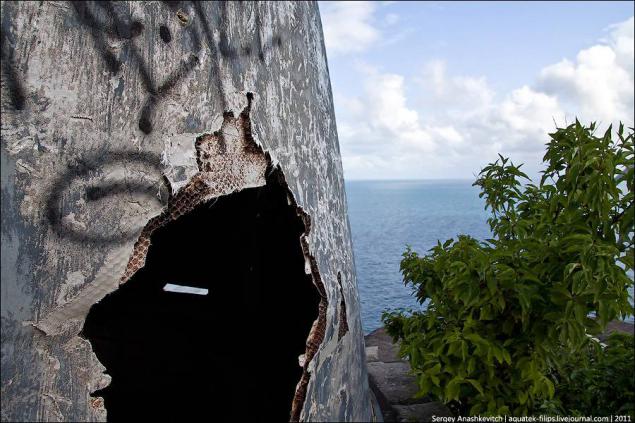
25. Deck control fire
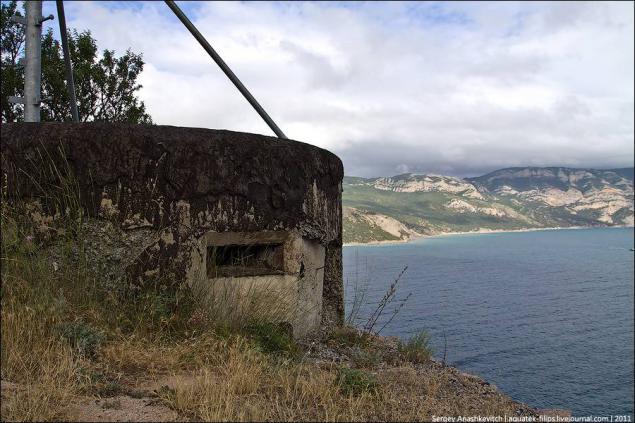
26. Remains of metal torn from the flesh on the gun site
At the end of the report we would like to go back to the heroic history of the battery during the Great Patriotic War.
In the fall of 1941 began the defense of Sevastopol. November 6 the first volleys thundered nineteenth battery, commanded by Captain M.S.Drapushko. The first battery of guns under the shells hit the position of the German troops near the village of Shuli (Ternivka), where the defense held the second marine regiment of the Red Army.
November 13 the Nazis occupied dominating heights Balaklava up to the mountain Spilia and the Genoese fortress. A six-inch gun battery on the position of the Germans separated the distance of a thousand meters. The command of coastal defense in the full use of the battery to strike at the enemy's rear. German prisoners told of horror nightmare in Alsu where battery fire destroyed two battalions of the Wehrmacht. To combat the battery specifically were moved heavy guns, mortars. Attack aircraft rained down on her hail of bombs. The duel lasted until 21 November.
Each payment instruments of 12 people. In the hands of the cellars served pudovye charges, 52-kilogram bombs. High rate advantage of naval guns in front of the field. But provides a firing mode real people. They worked at the limit, and even outside forces.
Cannon battery had armored covers, also had anti-aircraft cover. Division Captain Drapushko suffered losses in personnel. Burned camouflage nets, bubbled paint on the hot trunk. Sometimes the battery of the day hit by 300 shells, hundreds of mines. The Germans were convinced: "Centaur-1," as they called the 19-th battery destroyed. But fighters "Centaur" at night under canvas candlelight repaired wrecked guns and with the first rays of the sun again opened fire on the enemy.
Maj I.E.Petrov - Maritime Army Commander - in December 1941, he wrote: & quot; ... Heroic Drapushko battery, which took the brunt of the enemy in that direction, stopped the German offensive, defended important area ... & quot;
Maj P.A.Morgunov gave the command: rounds to spare! At the critical moment the battery to explode and go!
Under enemy fire, without heavy equipment gunners saving guns, dragged several kilometers offshore 152-mm guns, and the battery spoke again with a new position at the 7th kilometer of highway Balaklava.
December 17 began the second assault on the city. In his new battery led sniper fire. In the order of the fleet commander February 23, 1942 stated:
The third assault began June 7, 1942. June 16 bomb that gets into the command center, took the life of the battery commander Mark Semenovich Drapushko.
And on June 30 released the latest missiles, blowing past guns, gunners moved to Cape Khersones to leaving the ruined Sevastopol Blazing Red Army. (based on the Underground Sevastopol)

Source:
However, their primary task of fighting with the enemy at sea battery actually fails. In the autumn of 1941 all four guns were turned toward the coast and 6 months almost continuously worked on coming to Sevastopol Wehrmacht.
This battery Germans have not been able to take, how many did not. His resistance to the defenders of the battery completely stopped June 30, 1942, retreating along with the rest of the defending Sevastopol by the Red Army.
Destroyed the battery only in 2002. They cut out and removed all the metal, leaving a gaping openings are not concrete Wehrmacht troops. It made our conscious citizens.
The report blogger aquatek-filips tell stories about the heroic battery during World War II and show what's left of it today.
26 photos

2. Construction of the batteries began in 1913-1914, by order of the Military Council of April 14, 1912 southwest of Balaklava Bay. The head of the works was Colonel Petrov. By the time the Soviet government was ready to pack up to 75%. In Soviet times, it has been completed and armed with 152 mm guns removed from decommissioned ships. Initially numbering battery was different - it was called the battery №10.

3. View of the battery from the cliff Mytilino. You can clearly see how successful was the choice of its location - arc of fire was impressive angle, it is almost on the cliff with only one hand spacious approach that could be called a minus. It is the location of the battery is largely determined its inaccessibility during the defense of Sevastopol in 1941-1942.

4.Batareya, located on the hill on the right from the exit of the Balaklava Bay, was installed on a concrete base and had a cellar for ammunition and parapet, covering the personnel and weapons from enemy fire from the sea.

5. Brustvernaya part is casemated premises, hosted personnel, auxiliary facilities, etc. Now here love to frolic teens and homeless people sleeping

6. Above, I said that the battery was chetyrehorudiynoy. It refers to its pre-war history - before and during the war, there really were four 152-mm artillery shells, which is located hardly

7. Before the war the battery was renamed the 19th, and it was the first commander of G.Aleksander, then commander of the legendary 30th battery. The commander of the 19th during the war was the captain MS Drapushko, military commissar - Senior Political NA Kazakov. It Drapushko name is often called the battery in addition to its number.
Originally the battery was firing 130 degrees, having a rate of up to 10 rounds per minute. Planning Standard battery, except that it is located above the right-flank dungeon the slope and podbrustvernaya gallery has a bend and an extra ladder.

8. The right of the rocks we see two gun positions - they are post-war construction. Although this statement is ambiguous. According to some information and memories, two naval guns in 1942 were installed behind a rock on a temporary basis. This is indirectly confirmed by the fact that in the dungeons of Fort "South", captured by German troops in November 1941, can be seen hitting 6-inch shells and if draw the headmistress shooting guns battery, the fort "South" in the sector (130 degrees) misses. In addition, the German pictures in 1942 are clearly visible traces of the exploded building. However, to establish what were the guns failed.
The base of one of the gun emplacements later

9. Modern gun positions have casemated service premises at its base. They were intended to serve the guns, as well as its charging / discharging during the battle

10. Podorudiynye casemates "basic positions»

11. The battery was equipped with several observation points and rangefinder. One of them is a little lower down the slope, and to it is not very easy, especially in wet weather

12. Guardrails and proved a thorn metalheads unnecessary

13. The main entrance to the dungeons of the battery. Premises much inside incredibly damp, cold and a lot of mold. It cuts all that is possible. But because of the special humidity, the homeless do not live here, and hence there is a modern dirt

14. Decaying hinges

15. Entrance to one of the casemate rooms. There still is a little light, allowing you to take pictures

16. With every meter of every cooler. Outside the door to the right begins full darkness.

17. Photos can be done with the Eleventh times. The camera refuses to focus at close range, so on only manual focus.

18. Everything here is already pitch dark. Lantern did not think to take, so is flashed his 50-ki, in the intervals of light is focused manually and randomly shoot with the flash. Something happened

19. diesel generator. Just was not killed on the pipe sticking out of the ceiling

20. The ladder to the top. There's light

21. Finally got. There, behind these walls I walked 10 minutes ago

22. There, in dungeons, in one place far above the point of light flashed. Apparently this gap and has its source

23. Radioparent cap gun radar interference. It came with guns B-13 in the reduction of the battery after the war.

24. Its walls are made of a material similar to fiberglass. Apparently she came here at the end of battery life. By the way, after the war, the battery has been restored and were serving for the protection of the naval base of the Black Sea Fleet. And in 1999, it was prepared under the cancellation. What happened next is typical of our time.

25. Deck control fire

26. Remains of metal torn from the flesh on the gun site
At the end of the report we would like to go back to the heroic history of the battery during the Great Patriotic War.
In the fall of 1941 began the defense of Sevastopol. November 6 the first volleys thundered nineteenth battery, commanded by Captain M.S.Drapushko. The first battery of guns under the shells hit the position of the German troops near the village of Shuli (Ternivka), where the defense held the second marine regiment of the Red Army.
November 13 the Nazis occupied dominating heights Balaklava up to the mountain Spilia and the Genoese fortress. A six-inch gun battery on the position of the Germans separated the distance of a thousand meters. The command of coastal defense in the full use of the battery to strike at the enemy's rear. German prisoners told of horror nightmare in Alsu where battery fire destroyed two battalions of the Wehrmacht. To combat the battery specifically were moved heavy guns, mortars. Attack aircraft rained down on her hail of bombs. The duel lasted until 21 November.
Each payment instruments of 12 people. In the hands of the cellars served pudovye charges, 52-kilogram bombs. High rate advantage of naval guns in front of the field. But provides a firing mode real people. They worked at the limit, and even outside forces.
Cannon battery had armored covers, also had anti-aircraft cover. Division Captain Drapushko suffered losses in personnel. Burned camouflage nets, bubbled paint on the hot trunk. Sometimes the battery of the day hit by 300 shells, hundreds of mines. The Germans were convinced: "Centaur-1," as they called the 19-th battery destroyed. But fighters "Centaur" at night under canvas candlelight repaired wrecked guns and with the first rays of the sun again opened fire on the enemy.
Maj I.E.Petrov - Maritime Army Commander - in December 1941, he wrote: & quot; ... Heroic Drapushko battery, which took the brunt of the enemy in that direction, stopped the German offensive, defended important area ... & quot;
Maj P.A.Morgunov gave the command: rounds to spare! At the critical moment the battery to explode and go!
Under enemy fire, without heavy equipment gunners saving guns, dragged several kilometers offshore 152-mm guns, and the battery spoke again with a new position at the 7th kilometer of highway Balaklava.
December 17 began the second assault on the city. In his new battery led sniper fire. In the order of the fleet commander February 23, 1942 stated:
The third assault began June 7, 1942. June 16 bomb that gets into the command center, took the life of the battery commander Mark Semenovich Drapushko.
And on June 30 released the latest missiles, blowing past guns, gunners moved to Cape Khersones to leaving the ruined Sevastopol Blazing Red Army. (based on the Underground Sevastopol)

Source:
